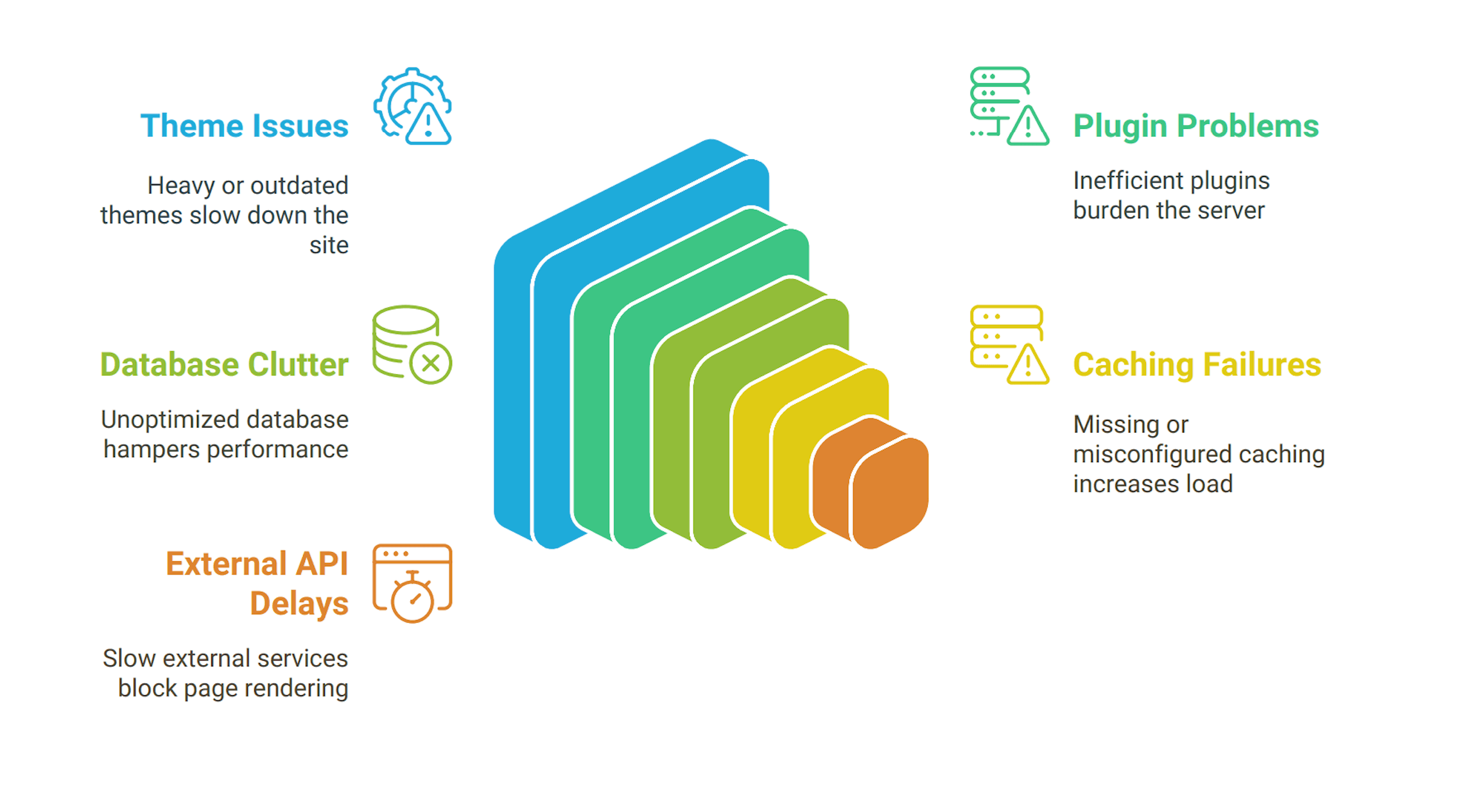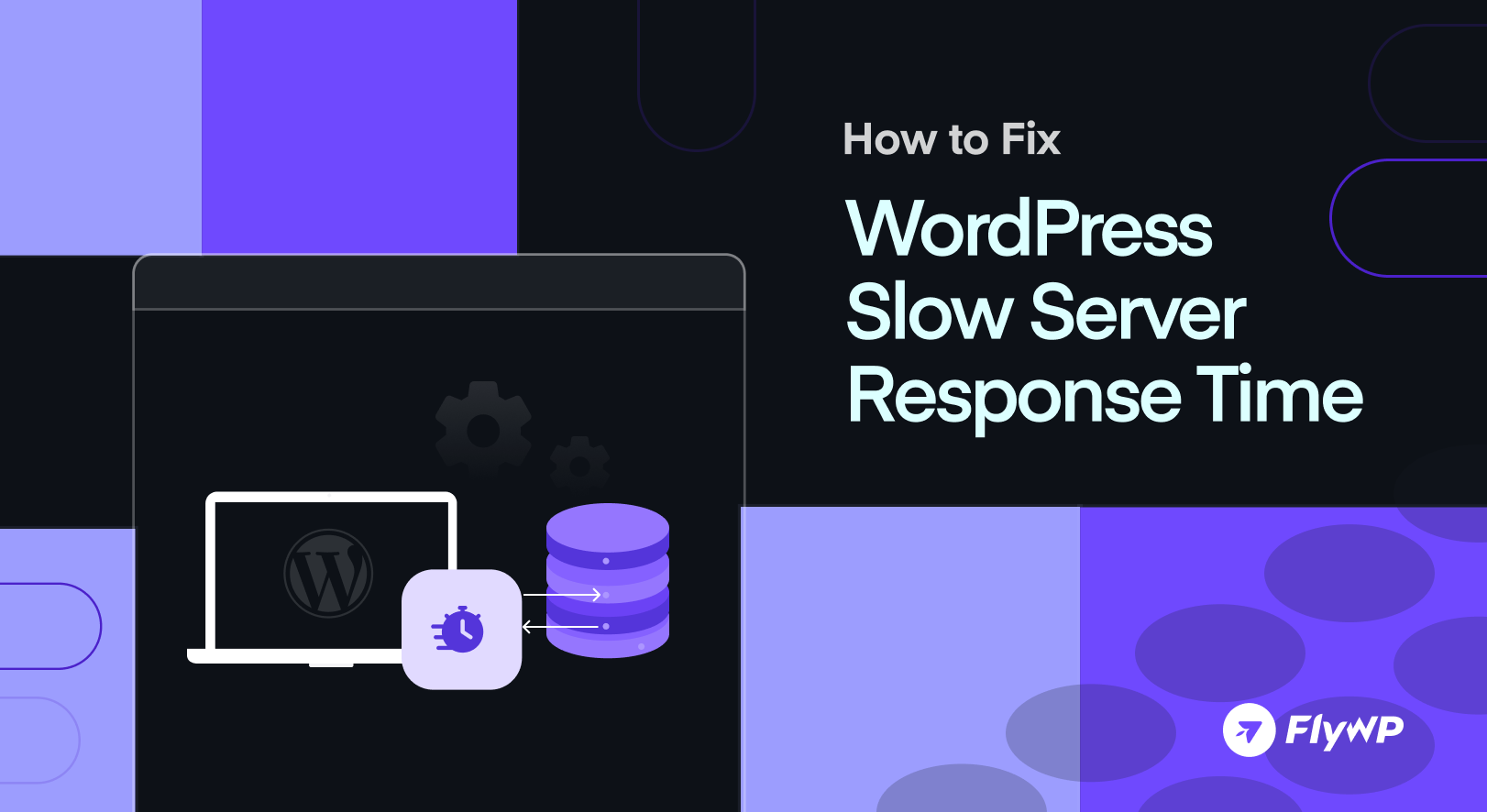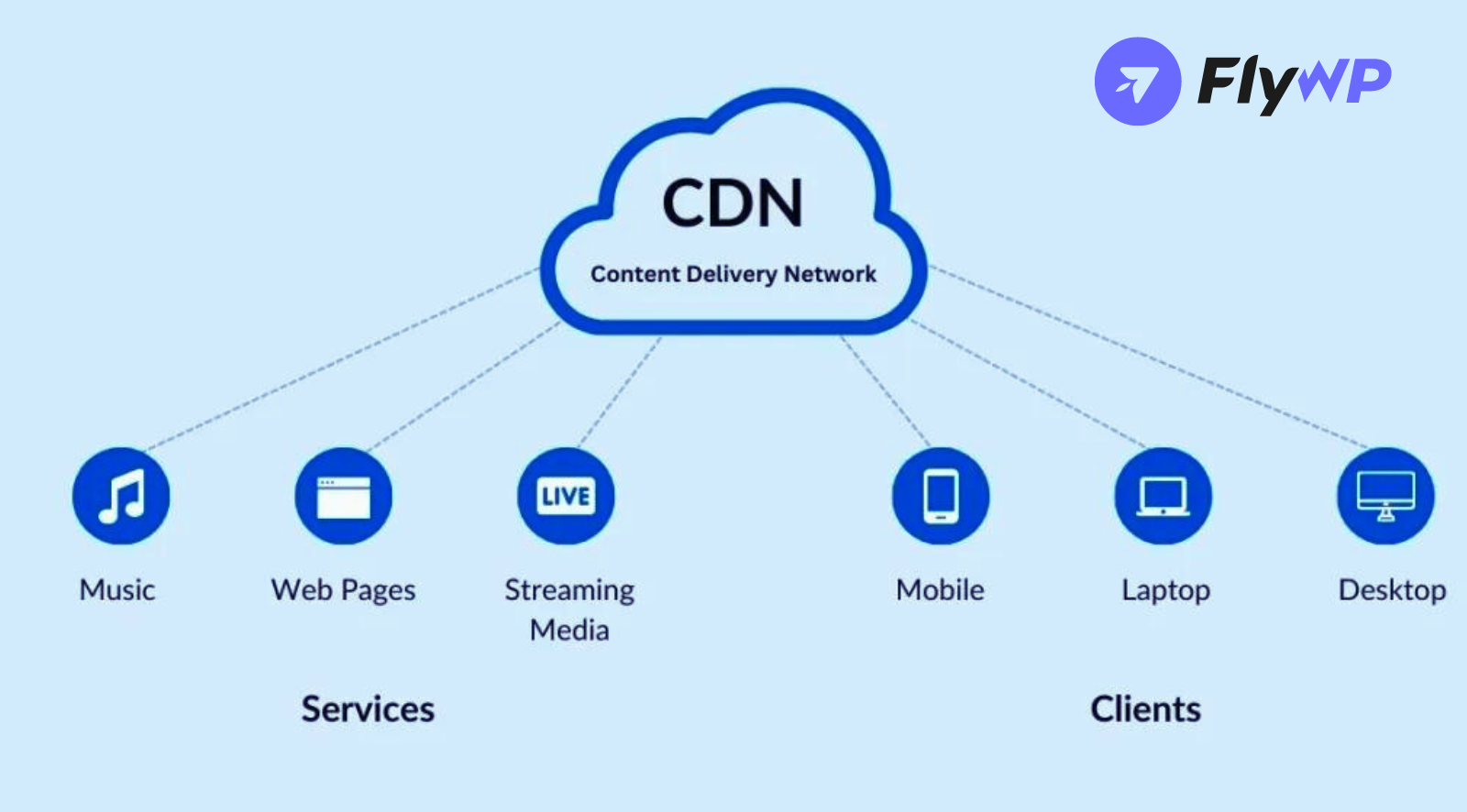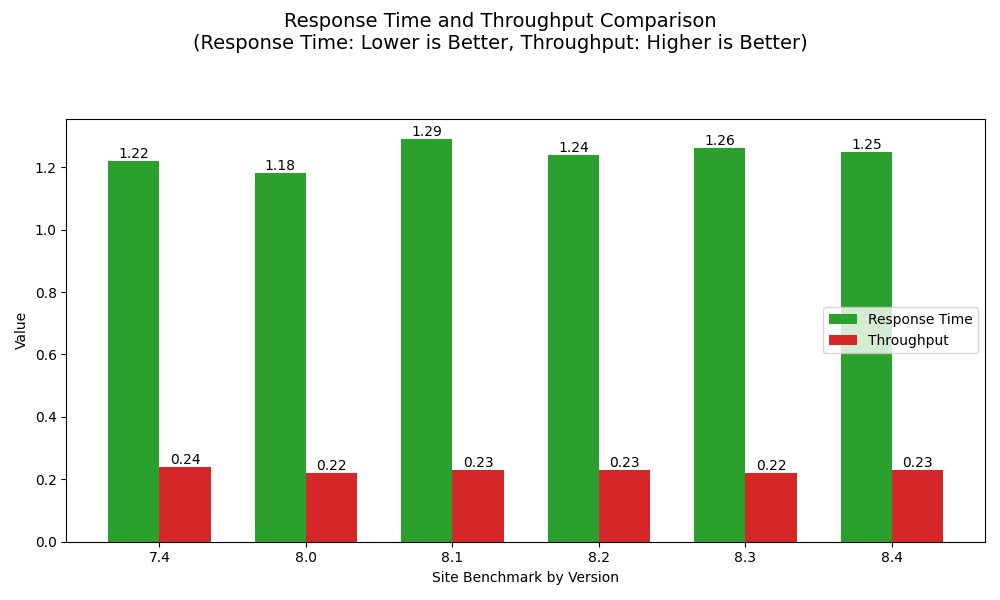Ever clicked a link and waited… and waited… before anything even showed up? That annoying pause where nothing loads but the browser keeps spinning, that’s not your theme’s fault or a heavy image. It’s server response time, also known as Time to First Byte (TTFB), is the delay between your browser asking for a page and your server saying, “Yes, I’m on it.”
If that delay is long, it doesn’t matter how fast your theme or plugins are. The slowdown already happened before the first pixel appears. Google says TTFB should be under 200ms. But many WordPress sites clock in at 600ms, 1 second, or worse. So what causes it? And more importantly, how can you fix it without switching to a $300/month server?
That’s exactly what you’re about to learn. From hosting tweaks to plugin audits to DNS tricks – this guide gives you every fix that actually works and fixes WordPress slow server response time.
What’s Slowing Your Websites Down? (Common Reasons for Slow Server Response Time)
Slow server response times arise from a combination of WordPress-specific issues, such as heavy themes and unoptimized databases, and generic problems, including inadequate hosting or geographical latency. By addressing these factors through lightweight themes, caching, better hosting, or optimized code, you can significantly reduce TTFB and enhance user experience. Here are the usual reasons for WordPress’s slow server response time:
WordPress-Specific Causes of Slow Server Response Time

- Heavy or Outdated Themes: Themes that load excessive scripts, styles, or complex PHP code place a heavy burden on the server, slowing down response times. Outdated themes may also be incompatible with the latest WordPress versions, leading to inefficient processes and conflicts that increase TTFB.
- Bloated or Inefficient Plugin: Plugins that execute database-heavy queries, make external API calls, or load unnecessary resources significantly slow down a WordPress site. The more plugins installed, the harder the server must work to process each page request, inflating server response times.
- Large, Unoptimized Database: A cluttered WordPress database, filled with post revisions, spam comments, transients, or orphaned data, hampers query performance. Since WordPress fetches data from the database for every page load, an unoptimized database directly contributes to slower TTFB.
- Missing or Misconfigured Caching: Without caching, WordPress dynamically rebuilds each page for every visitor, forcing the server to repeat resource-intensive tasks. Misconfigured caching, such as excluding key pages or improper cache expiration settings, fails to reduce server load, leading to delays.
- External API Calls or Third-Party Service: Plugins or themes that rely on external APIs, like social media feeds or Google Fonts, introduce delays when those services respond slowly. These external calls can block page rendering, causing the server to wait and increasing TTFB.
Read more to learn about Which Servers Have the Best TTFB
Generic Causes of Slow Server Response Time
- Inadequate Hosting Resources: Shared hosting or servers with limited CPU, RAM, or disk I/O struggle to handle traffic or complex requests. Insufficient resources lead to bottlenecks, causing the server to take longer to respond and increasing TTFB.
- Slow DNS Resolution: A slow or unreliable DNS provider delays the time it takes for a browser to locate and connect to the server. This initial lookup phase, if sluggish, adds unnecessary seconds to the server response time.
- Lack of Server-Side Optimizations: Without modern protocols like HTTP/3 or compression methods like Brotli, servers deliver content less efficiently. Outdated server software, such as old versions of Apache or Nginx, further slows processing, inflating TTFB.
- High Server Load or Traffic Spikes: Too many concurrent visitors or resource-heavy tasks, like backups or cron jobs, can overload the server. This high load causes delays in processing requests, resulting in slower server response times.
- Suboptimal SSL/TLS Configuration: Poorly configured SSL certificates or outdated TLS protocols increase the time needed to establish a secure connection. This handshake delay directly impacts TTFB, especially for sites with frequent visitor traffic.
- Geographical Latency: When servers are located far from the user base, data must travel longer distances across networks, increasing latency. This geographical distance slows down the initial server response, leading to higher TTFB.
- Unoptimized Backend Code: Inefficient server-side scripts or poorly written database queries, outside of WordPress-specific issues, require more processing time. This inefficiency bogs down the server, contributing to slower response times.
How to Measure Your Server Response Time (TTFB)
Before you fix anything, you’ve got to measure it. You need proof that your server response time is slow, not just a hunch. So, what are you looking at? TTFB. That stands for Time To First Byte, the time it takes from hitting Enter to when your browser gets the first byte of data from your server. Here’s how to check it:
1. Use Online Performance Testing Tools
Several free and reliable tools, including Google’s, can measure TTFB by analyzing your website’s server response. These tools provide detailed reports, including TTFB, and often suggest optimizations.
Google PageSpeed Insights: Visit pagespeed.web.dev, enter your website URL, and run the test. While PageSpeed Insights focuses on overall performance, TTFB is included in the diagnostics section of the report.

GTmetrix: Go to gtmetrix.com, input your URL, and run a test. TTFB appears in the “Waterfall” tab as the “Waiting” time for the initial request, with optimization recommendations.
WebPageTest: Access webpagetest.org, enter your URL, and select a test location and browser. TTFB is shown in the waterfall chart under the first request’s “Start Render” breakdown.
Pingdom: Visit tools.pingdom.com, enter your URL, and choose a test server location. The performance report lists TTFB as part of the “Wait” time in the timeline.
How to Use: Run tests multiple times from different locations to account for geographical latency. Aim for a TTFB under 200–600ms for optimal performance.
2. Leverage Browser Developer Tools
Most modern browsers have built-in developer tools to measure TTFB directly from your computer. Here’s how to use browser developer tools:
- Open your website in a browser (e.g., Chrome, Firefox).
- Press
F12or right-click and select “Inspect” to open Developer Tools. - Go to the “Network” tab and refresh the page (
Ctrl + RorCmd + R). - Click on the first resource (usually the main HTML file) in the network waterfall.
- Check the “Timing” tab for the “Waiting for server response” value, which is your TTFB.
Tip: Clear your browser cache or use Incognito mode for accurate results, and test multiple times to account for variability.
3. Use Command-Line Tools
For a more technical approach, command-line tools like curl can measure TTFB:
curl -s -w "\nTTFB: %{time_starttransfer}s\n" -o /dev/null <your-website-url>Explanation: The time_starttransfer variable in curl measures the time until the first byte is received. Run this command in a terminal, replacing <your-website-url> with your site’s URL (e.g., https://example.com).
Note: This method is useful for quick checks but may not account for real-world user conditions like browser rendering or CDN effects.
What’s a Good TTFB?
- Ideal: Under 200ms for fast, localized sites.
- Acceptable: 200–600ms for most websites.
- Problematic: Above 600ms, indicating optimization is needed.
What Happens If the TTFB Is Too High?
If your server response time is too high, it means there’s a significant delay between a user requesting a page and your server delivering the first bit of data. This has a wide range of negative consequences. Here’s a summary of what happens if your server response time (TTFB) is too high, presented in a table format:
| Category | What Happens | Impact |
| User Experience (UX) | Users face blank screens or long loading spinners. | – High Bounce Rates: Users leave your site quickly. |
| Perceived slowness and unresponsiveness. | – Lower Engagement: Less interaction with content and features. | |
| – Reduced Conversions: Lost sales, leads, and sign-ups. | ||
| SEO (Search Engine) | Google and other search engines detect slow loading. | – Lower Search Rankings: Your site appears lower in search results. |
| Poor performance on Core Web Vitals (especially LCP). | – Negative Core Web Vitals Scores: Direct SEO penalty. | |
| Search engine bots crawl your site less efficiently. | – Reduced Crawl Efficiency: Fewer pages indexed, slower updates. | |
| Brand Reputation | Website appears slow, unreliable, or outdated. | – Damaged Credibility: Users perceive your brand negatively. |
Best Ways to Fix WordPress Slow Server Response Time

By addressing the following areas: upgrading hosting, optimizing caching, cleaning up plugins and databases, leveraging modern protocols, and more, you can significantly reduce WordPress TTFB.
Fix #1: Choose the Right Hosting
If your server takes half a second just to wake up and say hello, nothing else matters. TTFB starts at the server level. That means your hosting provider either makes you look good or leaves you hanging while your visitors bounce.
Shared vs VPS vs Cloud
Still using cheap shared hosting? In that case, your WordPress site shares resources with 500+ other websites. On the flip side, VPS and cloud hosting give you more. You get dedicated resources, faster processing, and better control – all of which translate to quick server responses.
Shared Hosting: Affordable, but multiple sites share resources, leading to slower TTFB during traffic spikes. Best for small, low-traffic WordPress sites.
VPS Hosting: Dedicated resources on a virtual server ensure better performance and lower TTFB. Ideal for growing sites with moderate traffic.
Cloud Hosting: Scalable, distributed resources across multiple servers offer high reliability and fast TTFB. Suited for high-traffic or dynamic WordPress sites.
What to Look for in a Host That Doesn’t Kill Your TTFB
Not all hosts are created equal. Here’s what actually matters when speed is the priority:
- Modern server stack: NGINX or LiteSpeed crushes Apache in TTFB.
- Built-in object caching: Redis or Memcached helps process dynamic content faster.
- HTTP/3 support: Faster connections from the jump.
- Global CDN: Less distance = less wait.
- SSD or NVMe storage: No spinning disks. Please.
Read More: Our Top Picks for Speed-First WordPress Hosting
Fix #2: Use Full-Page Caching
Once your hosting is solid, the next thing that speeds up TTFB like a rocket booster is full-page caching. Without it, every time someone visits your site, the server rebuilds the page from scratch, loading PHP, running MySQL queries, and rendering the output.
With caching? Pre-built HTML served instantly. No heavy lifting. Just click → load.
What Is Full-Page Caching?
Think of it like this: instead of baking a fresh pizza every time someone orders, you keep hot slices ready to go. No wait, no waste. That’s full-page caching. It stores a static version of your page and delivers it right from memory or disk. It slashes TTFB from hundreds of milliseconds to just a few.
Best Cache Plugins for WordPress
You’ve got options, but not all plugins are built the same. These are the ones worth your time:
| Plugin | Why It’s Great | TTFB Impact |
|---|---|---|
| LiteSpeed Cache | Works best with LiteSpeed servers. Advanced features + QUIC.cloud CDN | Huge drop in TTFB, especially dynamic pages |
| Redis Object Cache | Speeds up dynamic content delivery, reduces database strain, and improves scalability. | Great for both frontend and TTFB |
| WP Rocket | Paid plugin, easy UI, powerful behind-the-scenes tweaks | Consistently faster response times |
Fix #3: Cut Down Your Plugins (And Audit Their Code)
You love plugins. We all do. But stacking 40 plugins on a site is like trying to run a marathon with a backpack full of bricks. You won’t make it far, and your server won’t either.
Each plugin adds PHP files, database queries, HTTP requests, or worse, all three. Now imagine them all loading before your page even begins to render. That’s how TTFB gets slower. It’s not just the number. It’s what the plugins do and how well they’re written.
How to Audit Your Plugins Like a Pro
Here’s your quick-hit process. Install Query Monitor, your new best friend. If you’re serious about reducing server response time in WordPress, Query Monitor gives you the lens to see what’s slowing things down at the PHP and database level. Step-by-step process:
Step 1: Visit the frontend or any admin page that’s loading slowly. That’s where you’ll dig into the bottlenecks. Then hover over the red Query Monitor menu in the admin bar. You’ll see dropdown options like: Queries, Hooks & Actions, HTTP API Calls, Environment, and more.
Step 2: Open the Queries by Component option.

If a plugin is triggering 20+ queries and taking 500ms or more, that’s your red flag. Check plugins and themes. Go to “Plugins” in the Query Monitor panel. It’ll show how much execution time each plugin adds to your page load. If a plugin adds 200–300ms or more, consider:
- Moving it to a Must-Use plugin (if essential)
- Replacing it with a lighter one
- Disabling it if not required
Use MU plugins for essentials: You can use Must-Use (MU) plugins in WordPress to enhance performance and manage essential functionality, and reduce server response time (TTFB). MU plugins are special WordPress plugins placed in the wp-content/mu-plugins/ directory (create it if it doesn’t exist). Unlike regular plugins, they load first, reducing delays caused by regular plugins.
Step 3: The HTTP API Calls panel displays server-side HTTP requests made by plugins or themes, such as API calls to external services. These requests, if slow or numerous, significantly increase TTFB by delaying server response.
Action: Reduce external API calls by hosting resources locally (e.g., Google Fonts, analytics scripts) or using asynchronous/deferred loading to prevent blocking. Replace those making excessive requests.
Important note: Once you’ve diagnosed the issue and made the fixes, deactivate Query Monitor if you’re on a production site. It does add load.
Fix #4: Optimize Your Theme
A slow-loading theme hits your TTFB right in the gut. Before the page can even start loading visually, your server is choking on unnecessary scripts, styles, and requests. Switch to a lightweight theme. Let’s start with the obvious fix: ditch heavy themes. Top picks for speed-focused themes:
| Lightweight Theme | Why It’s Fast |
|---|---|
| GeneratePress | Clean code, minimal CSS, no bloat |
| Kadence | Modular setup, load only what you use |
| Blocksy | Built for the block editor, optimized JS |
| Neve | 100KB or less page size out of the box |
Fix #5: Use a CDN and Configure It Right

A CDN isn’t just for images. It helps cut server response time worldwide by bringing your content closer to your visitors. But a misconfigured CDN can increase your TTFB. Let’s fix that. What does a CDN actually do? Think of it like this:
- No CDN? Your site loads from Myanmar for someone in Brazil.
- With CDN? It loads from São Paulo, or at least Miami.
That’s a 200ms–800ms TTFB improvement, depending on the user’s location.
Best CDNs for WordPress TTFB
| CDN | Features That Matter |
|---|---|
| Cloudflare | Free tier, DNS + CDN + Firewall, APO |
| BunnyCDN | Super low latency, easy setup |
| QUIC.cloud | Made for LiteSpeed, works with LSCache |
| KeyCDN | Reliable, developer-friendly |
Fix #6: Upgrade to PHP 8.x and HTTP/3
Still using PHP 7.4? That’s like driving a race car with a flat tire. The latest PHP 8.4 isn’t just newer, it’s faster, safer, and way better at handling large WordPress sites. Why is using the latest PHP version a big deal?
- Faster execution for PHP scripts (especially WooCommerce-heavy sites)
- Improved memory handling = better server efficiency
- Reduced CPU load under traffic spikes
We’ve explored how different PHP versions perform with WordPress under the FlyWP environment. Lower response time (TTFB) improves user experience, but high throughput (transaction volume) is key for scaling WordPress sites. PHP 7.4 and 8.4 provide strong transaction rates, balancing speed and capacity, even if their response times are slightly higher than PHP 8.0.

PHP 8.0 is fast for low latency, but PHP 7.4, 8.1, and 8.4 excel in high-transaction scenarios. Choose based on your priorities – speed, throughput, security, or compatibility, when optimizing WordPress in Docker with FlyWP.
Don’t forget HTTP/3: HTTP/3 is the fastest version of the protocol your browser uses to talk to servers. It speeds up:
- SSL handshakes
- Page load parallelization
- First byte delivery
If your server supports it, turn it on.
Bonus – Brotli Compression: If you’re still using GZIP… It’s time to upgrade your zip game. Brotli compresses files 20% smaller, works with NGINX, Apache, and Cloudflare. Thus, it saves TTFB and bandwidth. Add this to your NGINX config:
brotli on;
brotli_comp_level 6;
brotli_types text/plain text/css application/javascript;Fix#7: DNS, SSL, and the First Byte
You’ve cleaned up your hosting and backend. But if your DNS and SSL are slow, TTFB still suffers. These are the things most guides barely mention — but they matter. A lot. Your domain name needs to be resolved before anything else happens. If your DNS is slow, your TTFB tanks. Here’s what you should do – see a premium DNS provider like the following.
- Cloudflare DNS → Fastest globally, 1.1.1.1
- Google DNS → Reliable, not as fast
- Route53 (AWS) → Enterprise-level speed and uptime
Benchmark: Cloudflare’s average global DNS response time is <15ms, compared to GoDaddy’s >200ms
SSL/TLS: The Hidden Delay in HTTPS
Every HTTPS request includes a handshake. That’s where SSL adds milliseconds, or hundreds of them to your TTFB. Fix it like this:
- Use Let’s Encrypt SSL or Cloudflare SSL: Avoid using multiple chained certificates unless needed. Those add validation steps.
- Preload SSL using HSTS: Tell browsers: “Always use HTTPS.” Reduces redirects and handshake time.
- Enable TLS 1.3: It’s 40% faster than TLS 1.2 and more secure. Supported by all modern browsers.
Fix #8: Lazy Load the Right Way
Lazy loading sounds like a smart trick, right? Load images only when users scroll down. Saves bandwidth. Speeds things up. Makes Google happy.
But here’s the kicker: if done wrong, it actually slows your first byte.
To lazy load images without slowing down your WordPress server response time, start with native lazy loading. Most modern browsers support the loading="lazy" attribute, and many themes already include it. If yours doesn’t, install the free Native Lazyload plugin by WP Media to handle it automatically. For more control, use premium tools like Perfmatters, which lets you exclude above-the-fold images and skip lazy load for specific elements.
To make sure lazy loading isn’t backfiring and hurting your TTFB, test your site and check the render timeline. Chrome’s Lighthouse report is a handy tool, it flags lazy load issues and shows how image delays affect Largest Contentful Paint.
What to Lazy Load vs. What Not to Lazy Load
| Lazy Load | Don’t Lazy Load |
|---|---|
| Below-the-fold images | Hero image (above the fold) |
| YouTube/Vimeo iframes | Logo |
| Social media embeds | Above-the-fold background images |
| Ad scripts (e.g., Google Ads) | Fonts |
| Comment sections or review widgets | Core CSS and JS |
| Image galleries and sliders | Critical content |
| Third-party chat widgets | Main product or CTA images |
| Related posts and footer widgets | Navigation elements |
Fix #9: Use FlyWP to Speed Up Server Response Time

When your WordPress site takes ages to respond, it’s usually not just one thing. It’s the hosting, the software stack, the caching, all working together (or not). That’s where FlyWP steps in. Instead of hosting your site directly, FlyWP acts as a control panel for your own cloud servers, whether that’s DigitalOcean, Hetzner, AWS, or others. You spin up a server, and FlyWP sets up everything. Here’s how FlyWP directly improves your TTFB:
| Feature | How It Helps TTFB |
|---|---|
| Server-Level Caching (Redis + Object Cache Pro) | Serves repeated requests faster, cutting down CPU time. |
| Latest PHP (8.2+) | Processes scripts up to 3x faster than older PHP versions. |
| NGINX/OpenLiteSpeed Stack | Handles concurrent traffic efficiently, with faster request processing. |
| Cloud Hosting Integration | You run your site on top-tier cloud servers, not shared resources. |
| Auto SSL & Brotli Compression | Cuts down handshake time and payload size. |
| Isolated Environments | Each site has its own resources, avoiding “noisy neighbor” issues. |
With FlyWP, you don’t need to manually tweak the backend or install 5 different optimization tools. The platform builds your server environment for speed straight from the first byte.
Speed Up Your WordPress Site Before People Click Away
A slow website doesn’t just test patience. It sends visitors running and drops your rankings. But you don’t need to be a tech wizard to fix it. Clean up heavy themes and plugins. Use caching and a CDN. Keep your database tidy. And most importantly, host your site where speed actually matters. Small changes add up. Each step you take gets your site faster and your visitors happier. So don’t wait.